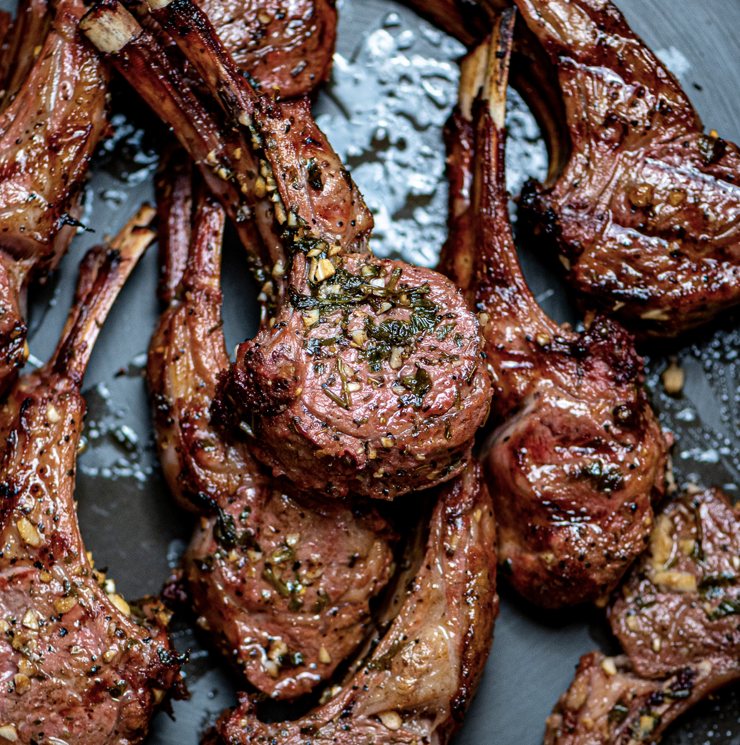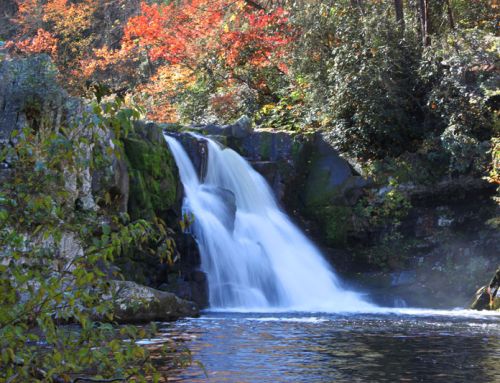Nestled amidst the lush, rolling hills of the Appalachian range, the Smoky Mountains are not just a treasure trove of natural beauty, but also a melting pot of rich culinary traditions. This region, steeped in history and culture, offers a unique gastronomic tapestry woven together by the Indigenous Cherokee, European settlers, and the rhythms of the seasons. In this exploration, we’ll journey through the flavorful history of Smoky Mountain cuisine, delve into the essence of authentic catering from this region, tempt your taste buds with exemplary menus tailored for varied occasions, and arm you with key questions to ensure your caterer captures the true spirit of the Smokies.
History of Smoky Mountain Cuisine
Smoky Mountain cuisine is a rich and storied tradition rooted in the Appalachian region. It reflects both the abundant natural resources of the Smoky Mountains and the cultural histories of the people who have lived there. Here’s a brief overview of the history of Smoky Mountain cuisine:
- Indigenous Influence: Before European settlers arrived, the Cherokee people inhabited the Smoky Mountain region. They hunted game like deer and wild turkey and fished in the mountain streams. They cultivated crops like beans, corn, and squash (often referred to as the “Three Sisters”), which still play a prominent role in the region’s cuisine.
- European Settlers: The 18th and 19th centuries saw an influx of European settlers, particularly Scots-Irish, English, and German immigrants. They brought with them farming and cooking traditions that merged with the indigenous practices.
- Resourcefulness & Preservation: Due to the region’s isolation, residents had to be resourceful. Preserving food for the harsher seasons became crucial. This led to techniques like canning, pickling, smoking, and curing. Smoked meats, apple butter, and pickled vegetables are staples in Smoky Mountain cuisine as a result.
- Corn’s Central Role: Corn became a staple for mountain settlers. It was used to make cornbread, grits, and even moonshine, an infamous spirit with roots in the Smoky Mountains.
- Wild Edibles & Foraging: Given the biodiversity of the region, foraging played a significant role in the diet. Wild edibles like ramps (wild leeks), morel mushrooms, berries, and dandelion greens were (and still are) commonly consumed.
- Livestock & Hunting: The mountainous terrain was more suited to livestock like pigs than large-scale agriculture. As a result, pork products, including bacon, ham, and sausages, became staples. Hunting also supplemented diets with venison, rabbit, and squirrel.
- Influence of Neighboring Regions: Smoky Mountain cuisine also absorbed elements from neighboring culinary traditions, such as Southern, Midwestern, and even some aspects of Pennsylvania Dutch.
- Modern Revival: In recent years, there’s been a resurgence in traditional Smoky Mountain foods. Local chefs are infusing traditional dishes with modern techniques. There’s also a renewed interest in foraging and using fresh, local ingredients.
- Moonshine: No discussion of Smoky Mountain cuisine is complete without mentioning moonshine. Due to the region’s isolation and the rugged terrain, it became a hub for illegal moonshine production during the Prohibition era. While once clandestine, today, moonshine has been legalized and commercialized, with many distilleries offering a wide variety of flavors and celebrating the spirit’s storied past.
In essence, Smoky Mountain cuisine tells the story of a people deeply connected to their land, making the most of what the region offers, and blending traditions to create a unique and flavorful culinary heritage.
What Makes Catering of Smoky Mountain Cuisine Authentic and Memorable?
Smoky Mountain cuisine, rooted in the traditions of the Appalachian region, is known for its homey flavors, use of locally-sourced ingredients, and time-honored cooking methods. To ensure the catering of Smoky Mountain cuisine is both authentic and memorable, consider the following elements:
- Traditional Ingredients: Utilizing native ingredients such as ramps (wild leeks), morel mushrooms, cornmeal, sorghum molasses, country ham, and mountain trout ensures authenticity.
- Preservation Techniques: The Smoky Mountain region is known for preserving foods through canning, pickling, and smoking. Incorporate pickled vegetables, smoked meats, and fruit preserves into the menu.
- Wood-Fired Cooking: Many traditional dishes benefit from being cooked over open flames or in wood-fired ovens, imparting a distinctive smoky flavor that’s synonymous with mountain cooking.
- Homemade Breads and Biscuits: Freshly baked cornbread, buttermilk biscuits, and stack cakes should be staples. The smell of these items baking can instantly transport guests to a Smoky Mountain kitchen.
- Comfort Foods: Think of hearty stews, cast iron skillet dishes, and one-pot meals like beans and greens, country-fried steak, and chicken and dumplings.
- Farm-to-Table Approach: Source ingredients from local farms and suppliers. Freshness is paramount, and supporting local businesses adds to the authenticity.
- Mountain Beverages: Offer moonshine, traditionally distilled in the region, as well as local craft beers and ciders. Don’t forget homemade lemonades, sweet tea, and sassafras tea.
- Storytelling: Each dish has a story, whether it’s about its origins or how it played a role in family gatherings. Share these tales with guests to enhance their dining experience.
- Rustic Presentation: Serve meals in cast iron skillets, on wooden platters, or in mason jars. The presentation should evoke feelings of nostalgia and simplicity.
- Local Desserts: Offer classic desserts like blackberry cobbler, apple stack cake, and chestnut pudding. Using fruits that are in season and local to the Smokies will heighten the authenticity.
- Attention to Seasonality: Align the menu with the seasons, embracing the fresh produce and flavors that are naturally available during that time of year in the Smoky Mountains.
- Engage the Senses: From the sound of bluegrass music playing in the background to the sight of lanterns and checkered tablecloths, the ambiance should resonate with the region’s traditions.
- Interactive Stations: Consider adding interactive elements, like a grits or biscuit bar where guests can customize their dishes, or a live demonstration of apple butter being made.
By incorporating these elements, caterers can craft an experience that doesn’t just serve food but tells the rich story of Smoky Mountain traditions, ensuring the meal is both authentic and unforgettable.
Some Examples of Smoky Mountain Inspired Menus from a Caterer
Drawing upon the rich culinary traditions of the Smoky Mountains, HomeCraft Restaurant, famous for Smoky Mountain Cuisine with a Caribbean twist, has some dishes that you might consider for various occasions:
1) For a Wedding:
- Appetizers:
Fried green tomatoes with a ramp aioli.
Mini country ham biscuits with apple butter.
Smoked trout crostini. - Main Courses:
Grilled mountain trout with herb butter.
Stuffed pork loin with wild morel mushrooms and sorghum glaze.
Buttermilk fried chicken with white gravy. - Sides:
Cast iron skillet cornbread.
Braised collard greens with smoked bacon.
Creamy stone-ground grits with cheddar. - Desserts:
Blackberry cobbler with vanilla bean ice cream.
Apple stack cake.
Moonshine-infused chocolate truffles.
2) For Thanksgiving:
- Main Course:
Smoked turkey with cranberry and ramp stuffing. - Sides:
Sweet potato casserole with candied pecans.
Green beans cooked with country ham and onions.
Corn pudding. Mashed potatoes with gravy. - Desserts:
Pecan pie with a moonshine whipped cream.
Pumpkin and sorghum molasses pie.
3) For Christmas:
- Main Course:
Glazed ham with a brown sugar and sorghum molasses glaze.
Beef pot roast cooked with root vegetables and local herbs. - Sides:
Winter squash and apple bake.
Cabbage rolls stuffed with rice and ground pork.
Biscuits with sausage gravy. - Desserts:
Gingerbread made with molasses and served with lemon sauce.
Chestnut and chocolate pudding.
4) For a Corporate Event:
- Appetizers:
Mini ramp and cheese tarts.
Smoked sausage bites with mustard sauce.
Pickled vegetables. - Main Courses (buffet style for easy serving):
Pulled pork sliders with coleslaw.
Bison Meatloaf and Macaroni Pie.
Grilled vegetable platter with a moonshine vinaigrette.
Beef stew with root vegetables. - Sides:
Macaroni and cheese with a crispy topping.
Corn and bean salad with fresh herbs.
Potato salad with a creamy mustard dressing. - Desserts:
Assorted mini pies (blueberry, apple, cherry).
Brownies with a caramel and moonshine drizzle.
Conclusion
In the heart of the Smoky Mountains, cuisine is more than just sustenance; it’s a story, a legacy passed down through generations. The flavors of this region, seasoned with history and tradition, offer a rich tapestry that invites us to gather around the table and celebrate a shared heritage. Authentic Smoky Mountain catering transports us to those misty peaks, through dishes that resonate with the land’s bounty and its people’s resilience. As you embark on your culinary journey, whether curating a menu for a special event or simply satiating a curious palate, remember to seek those flavors that echo the spirit of the Smokies. In every bite, there’s a whisper of the mountains, a tale of times gone by, and a promise of memories yet to be made.




